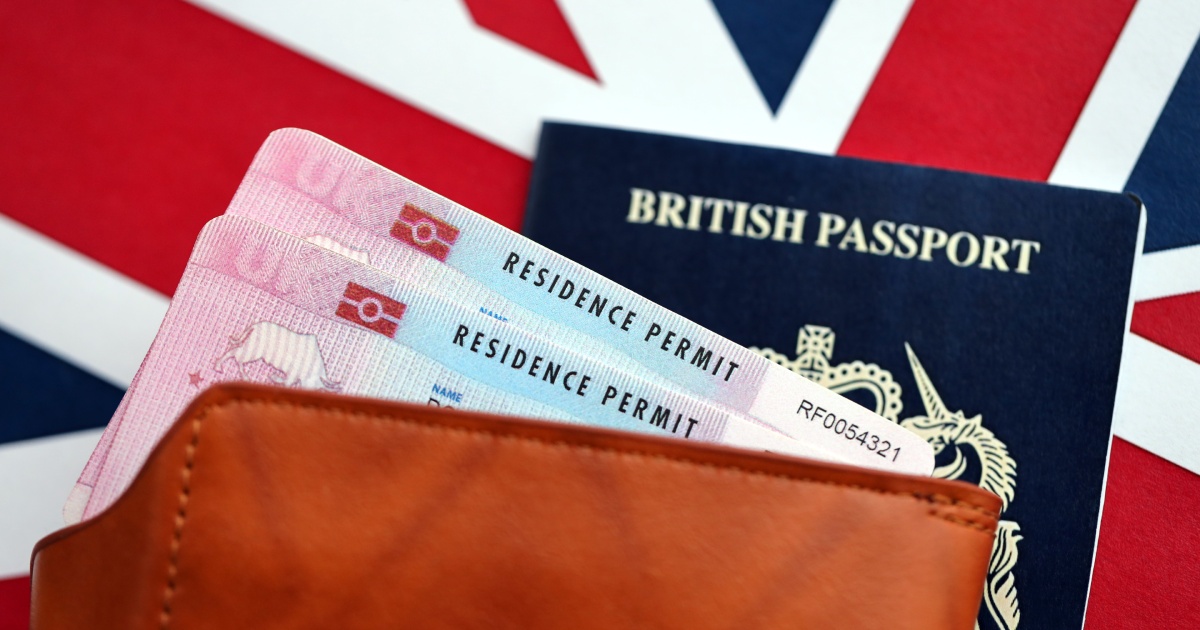Living Permanently in the UK | Step-by-Step Guide to Starting a New Life

Living permanently in the United Kingdom is one of the most life-changing decisions anyone can make. The UK has always been a global destination for people seeking quality education, economic stability, cultural diversity, and career growth. From London’s bustling streets to Scotland’s scenic landscapes, the UK offers a unique mix of tradition, opportunity, and modern living that attracts millions of migrants each year.
But let’s be honest, settling permanently in the UK is not just about landing a visa. It is about building a life, securing your future, and finding your place in a country that values hard work, fairness, and stability. Whether you are moving for work, family, or study, understanding the process and taking the right steps can make your journey far smoother than you might imagine.
Let’s break down everything you need to know about living permanently in the UK, what it means, how to get there, and how to do it without unnecessary complications.
Understanding What It Means to Live Permanently in the UK
Living permanently in the UK means you have been granted Indefinite Leave to Remain, often called ILR. This is the UK’s equivalent of permanent residency. With ILR, you can live, work, and study in the country without restrictions. You are free from visa renewals and immigration time limits, and you gain access to many of the same rights as British citizens.
You can work for any employer, start a business, access public healthcare through the NHS, and apply for certain benefits. After holding ILR for a period of time, usually twelve months, you may apply for British citizenship, provided you meet the residency and good character requirements.
ILR is the foundation of a permanent future in the UK. It means you are no longer a temporary visitor, you are part of the system, the economy, and the community.
Why People Choose to Live Permanently in the UK
The UK has long been a magnet for people from around the world, and the reasons are clear. The country offers a stable economy, world class healthcare, and some of the best universities in the world. Cities like London, Manchester, Birmingham, and Edinburgh are hubs for business, innovation, and cultural diversity.
For professionals, the UK job market is vast and full of opportunity. Whether in technology, healthcare, finance, engineering, or education, the country rewards skill and experience.
The education system is another major attraction. From Oxford and Cambridge to the London School of Economics, the UK’s universities are globally respected. Parents also find comfort in knowing their children can receive a strong education, whether through public or private schooling.
Then there is quality of life. While the UK may not have Australia’s sunshine, it offers safety, structure, reliable infrastructure, and a strong sense of community. It is a place where law, order, and opportunity coexist.
Main Pathways to Living Permanently in the UK
There are several ways to achieve permanent residence in the UK, depending on your background and goals. The most common routes include the Skilled Worker Visa, Family Visa, and Graduate or Long Residence routes.
The Skilled Worker Visa is one of the most direct routes to permanent residence. It allows foreign nationals with a job offer from a licensed UK employer to live and work in the UK. After five years of continuous residence on this visa, you can apply for Indefinite Leave to Remain.
The Family Visa route is for those with close family members who are British citizens or settled residents. Spouses, partners, parents, and children can join or remain in the UK under this category. After living in the UK for a few years under a Family Visa, you can also apply for ILR.
The Graduate Route is for international students who have completed a degree in the UK. It allows you to stay for a few years after graduation to work or look for work. Once you transition into a Skilled Worker role, you begin counting your time toward permanent residency.
Another option is the Long Residence Route, which applies to individuals who have legally lived in the UK for at least ten continuous years. This pathway recognizes people who have built their lives in the country over a long period.
Step by Step Guide to Living Permanently in the UK Without Too Much Stress
Getting ILR may seem complicated, but with clear steps and proper preparation, the process becomes manageable. Here is a structured path to guide you.
Step 1: Choose the Right Visa Route
Your first step is identifying which visa suits your circumstances. If you are a professional with job skills, the Skilled Worker Visa is your best option. If you are joining family, the Family Visa is the route to take. For students, the Graduate or Long Residence path might be more suitable.
Choosing the right visa from the start saves time and ensures your years in the UK count toward permanent residency.
Step 2: Meet the Continuous Residence Requirement
To qualify for ILR, you must have lived in the UK lawfully for a set period, usually five years under most visa types. You should not have spent more than one hundred eighty days outside the UK in any twelve month period during that time. Keep accurate travel records to avoid complications later.
Step 3: Prove Your English Proficiency
Applicants for ILR must demonstrate a good command of English. You can do this by passing an approved English test such as IELTS for UKVI or by earning a degree taught in English.
Step 4: Pass the Life in the UK Test
This test checks your knowledge of British culture, history, values, and society. It is a mandatory part of the ILR process. You will need to study topics such as the UK’s political system, traditions, and important historical events. Passing this test shows your readiness to integrate fully into life in the UK.
Step 5: Prepare and Submit Your ILR Application
Once you meet the eligibility requirements, you can apply for ILR online through the UK government’s official website. You will be asked to provide supporting documents, including proof of residence, employment, income, and identity.
It is important to ensure your application is accurate. Even small mistakes can cause delays. Double check all forms, pay the correct fees, and submit everything in one complete package.
Step 6: Attend Your Biometric Appointment
After submitting your application, you will be asked to attend a biometric appointment at a UK Visa and Citizenship Application Services center. Your fingerprints and photograph will be taken as part of the identity verification process.
Step 7: Wait for a Decision
The waiting period for ILR decisions can vary, but most applicants receive a response within six months. If approved, you will receive confirmation of your new status and be free from visa renewals or time limits.
Step 8: Build Your New Life in the UK
Once you are granted Indefinite Leave to Remain, your focus should shift to settling in and building stability. Open a bank account if you have not already, register with the NHS for healthcare, and keep your documents safe.
If you are working, continue developing your career or consider advancing your skills through training or education. The UK rewards continuous improvement and professional development.
If you have children, research schools early. The UK’s education system is diverse, offering state funded schools, academies, and independent schools.
Step 9: Consider Applying for Citizenship
After holding ILR for at least one year, you may apply for British citizenship. This step gives you full rights, including voting and obtaining a British passport. It is the final milestone in becoming a full member of British society.
Life After Getting Permanent Residence in the UK
Living permanently in the UK opens doors to a stable, fulfilling life. You can plan long term without worrying about visa renewals. You can invest, buy property, and access healthcare and education like any other resident.
Financially, it allows you to establish credit, build savings, and qualify for mortgages or business loans. Socially, it gives you the opportunity to integrate more deeply into local communities, contribute to society, and feel a genuine sense of belonging.
Common Challenges and How to Overcome Them
One common challenge is the cost of living, especially in major cities like London. Planning your finances early helps you avoid unnecessary stress. Consider budgeting, exploring affordable housing areas, and using public transport to manage expenses.
Another challenge is cultural adjustment. The UK’s customs, social norms, and weather may take time to get used to. Stay open minded, meet new people, and immerse yourself in community activities to feel more connected.
If your ILR application is delayed or refused, seek professional advice from an immigration lawyer or a registered consultant. They can review your case, identify issues, and guide you through an appeal or reapplication if needed.
Final Thoughts
Living permanently in the UK represents more than a legal status. It is about building a secure, meaningful life in one of the most respected and stable countries in the world. Whether your goal is career advancement, family stability, or education, the UK provides the foundation for growth and success.
By following each step carefully, choosing the right visa, maintaining continuous residence, preparing your documents, and passing the required tests, you can achieve permanent residency without unnecessary complications.
The UK rewards those who plan ahead, stay patient, and integrate with purpose. If you commit to the process, you will find that living permanently in the UK is not just a goal, it is the beginning of a lasting and rewarding new chapter.













